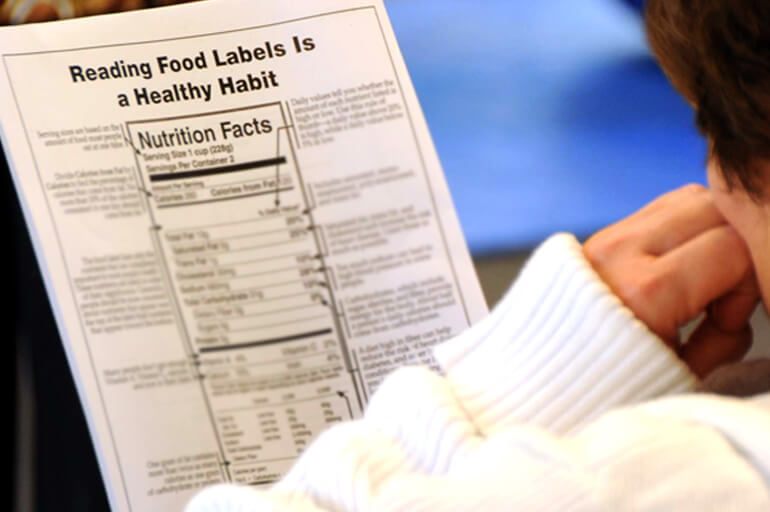Decoding the nutrition label of food products
DECEMBER 13, 2019

When it comes to food, most of us make our choices based on what we like, how hungry we are and how appetising something looks. Choosing in this manner generally leads to consumption of foods that are high in salt, sugar, fat and calories while being low in nutrition. These sorts of foods are usually classified as junk food. Frequent consumption of junk food leads to a higher risk of obesity, cardiovascular diseases and other chronic health problems. But how do you know whether you are eating junk food or not? We all know that most fast food can be called junk food, but what about the food we buy from stores? Today we help you understand the nutrition labels on store-bought products to keep you away from junk food and make healthy choices for you and your family.
Serving size
Most nutrition labels have similar layouts ordered in a descending fashion. Let’s break them all down one by one to understand what would constitute a healthy snack and what could be classified as junk. At the start of the label you have the serving size. This is a standardised form of measurement, describing one serving as 1 cup or 1 piece followed by the metric amount i.e the number of grams or kilograms the serving constitutes. The serving size determines the number of calories and nutrients in one single serving.
Calories
The calories section provides an understanding of the amount of energy you get from a single serving. This is the section you have to keep an eye on to calculate the number of servings you can consume on a diet. Most healthy adults are recommended to consume 2,000 calories per day. However, it is not advisable to get all of your calories from one food source, which is why it is important to serve yourself the right amount of calories.
Nutrients
The next section is the nutrient list. This section generally begins with cholesterol, saturated fats, trans fats and sodium. The lesser the quantity of these nutrients, the better it is for your body. When picking potato chips at the general store it is important to glance at these numbers to recognise which ones are the healthiest. Right below these nutrients are dietary fibers and other nutrients that are important for our body. These include nutrients such as calcium, iron, magnesium, potassium and vitamins A, C, D and E.
%Daily Value
The %Daily value tells you the percentage of each nutrient in a single serving. For example, if the label lists 15% for calcium it means that one serving provides 15% of the calcium you need every day. If you want to consume more of a certain nutrient look for food items with a higher %Daily value. And be sure to get a variety of different nutrients as part of your diet.
The final aspect of the nutrition label is the footnote. The footnote generally begins with the statement, "%Daily values are based on a 2,000-calorie diet. Your daily values may be higher or lower depending on your calorie needs." Food labels help customers make informed choices about the food that they are buying. An informed customer can make better decisions for their own health, giving them a happy and fulfilling meal and life. To find out more interesting facts check out surprising fat loss facts and other interesting articles on the DIP Foods website.

